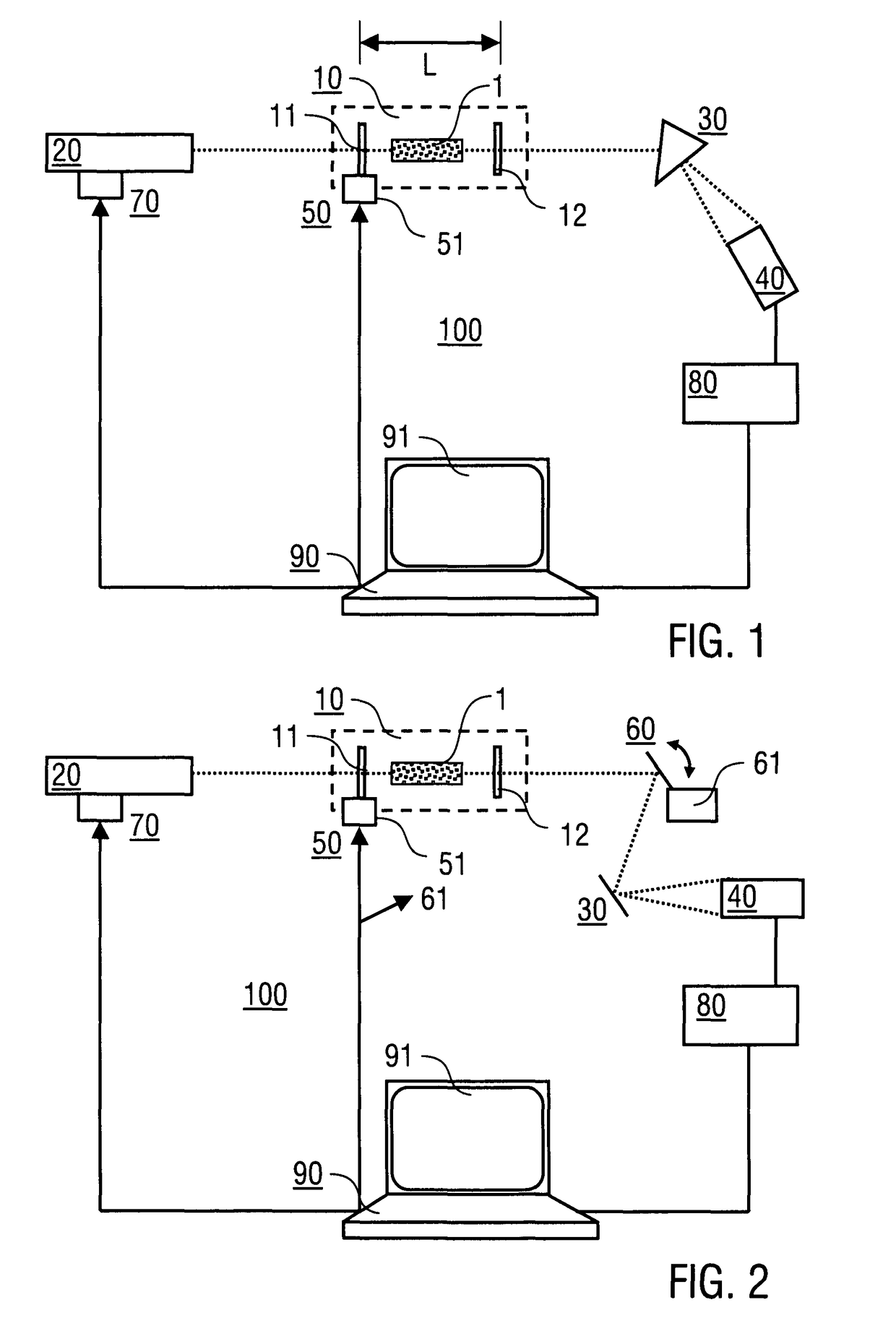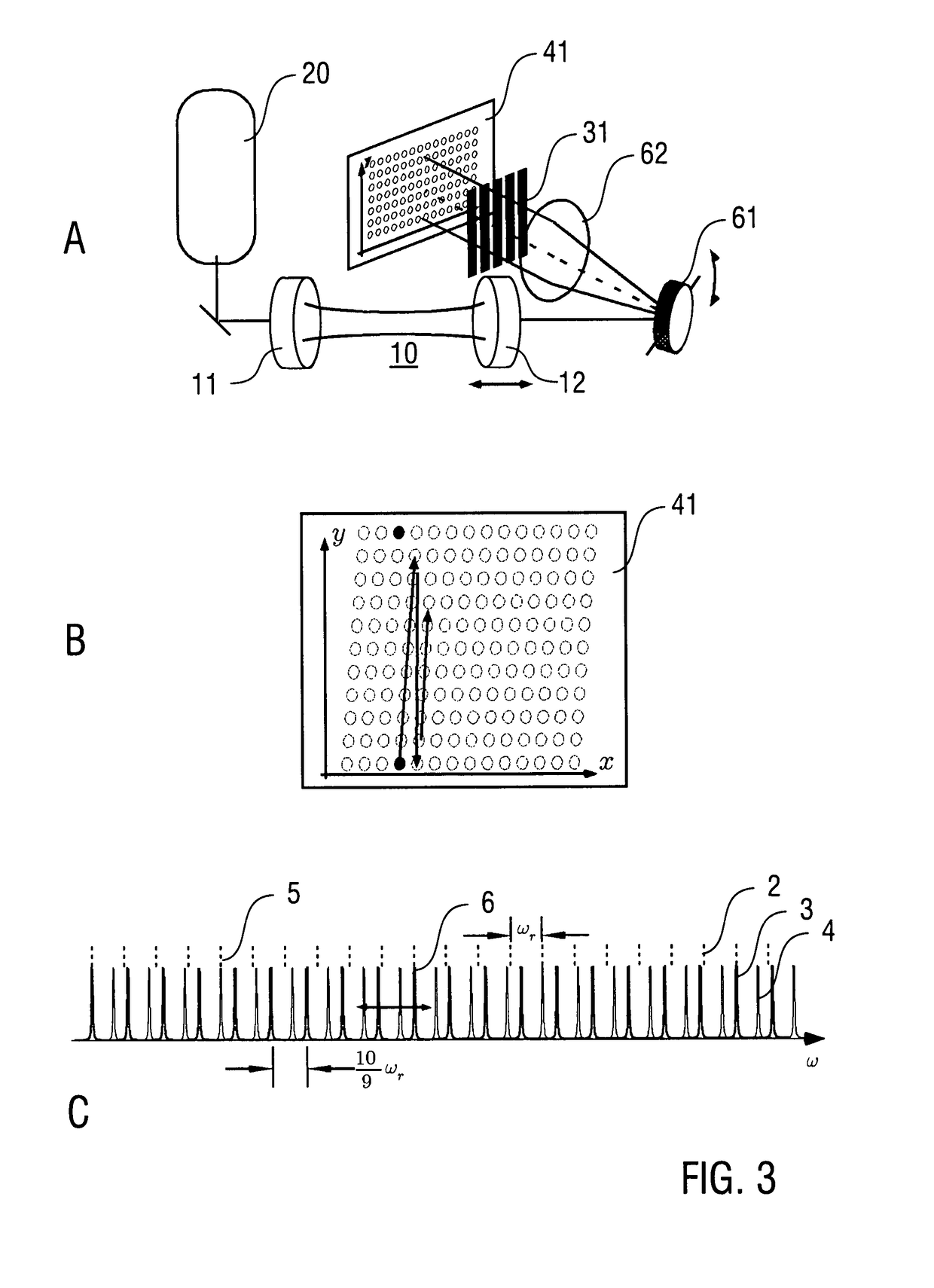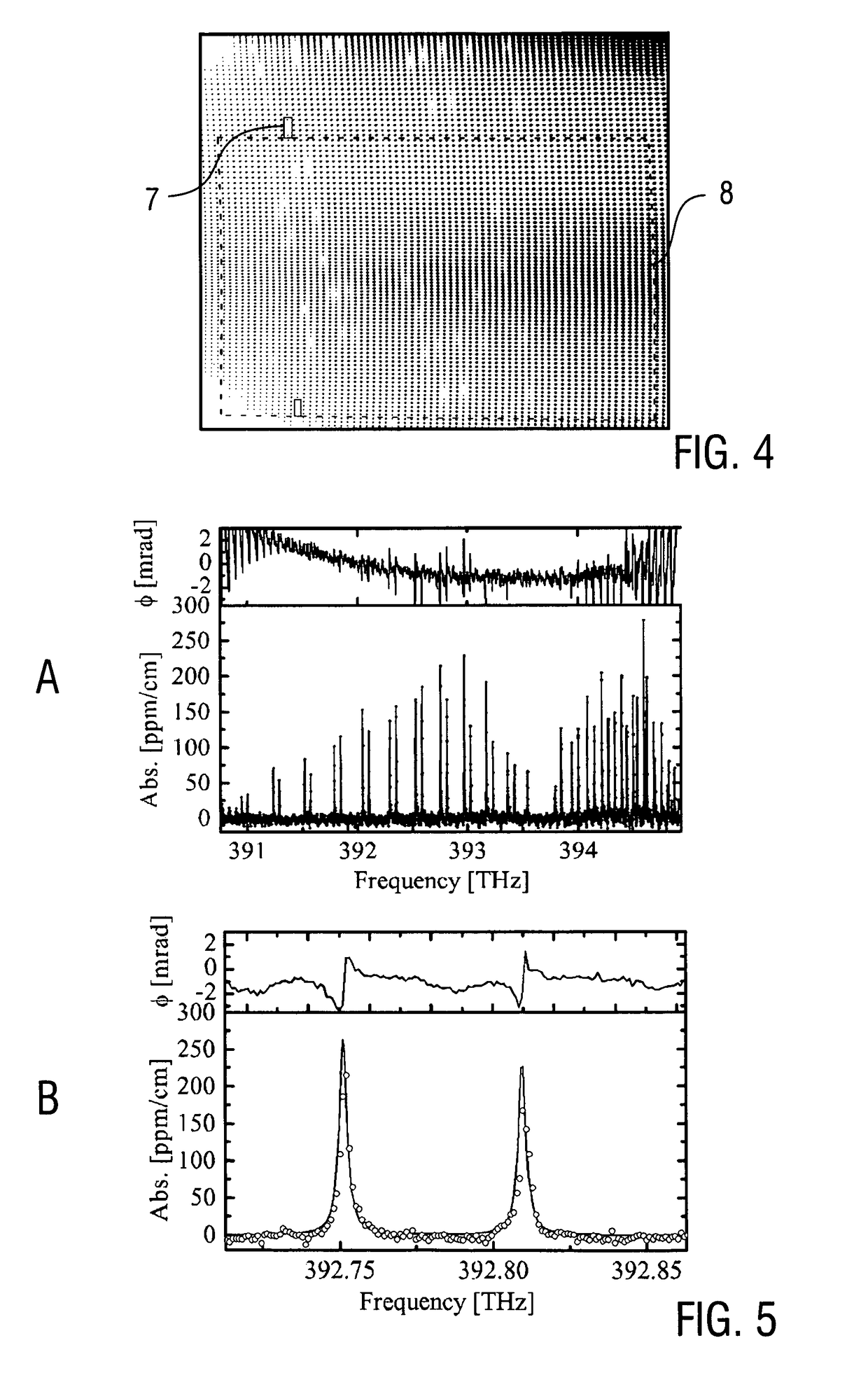Method and device for cavity enhanced optical vernier spectroscopy
a technology of enhanced optical vernier and cavity, applied in the direction of optical radiation measurement, instruments, spectrometry/spectrophotometry/monochromators, etc., can solve the problems of limited resolution of conventional ceas methods, inability to resolve individual comb components of light pulse trains coupled into the resonator cavity, and inability to solve the individual comb components of light pulse trains. , to achieve the effect of boosting the resolution of the method, enhancing the transmission frequency spacing, and boosting the absorption spectrum
- Summary
- Abstract
- Description
- Claims
- Application Information
AI Technical Summary
Benefits of technology
Problems solved by technology
Method used
Image
Examples
Embodiment Construction
[0038]Preferred embodiments of the invention are illustrated in FIGS. 1 and 2. It is emphasized that these Figures represent schematic illustrations only. Details of the optical set-up, like e.g. controlling, driving or monitoring components or further optical parts are not described as far as they are known from prior art techniques of generating and handling ultra-short light pulses.
[0039]According to FIG. 1, the spectroscopic device 100 of the invention comprises a resonator cavity 10, a pulse source device 20, a spectral disperser device 30, a detector device 40, an adjusting device 50, a detuning device 70, an evaluation device 80 and a control device 90. The resonator cavity 10 comprises e.g. four mirrors in a bowtie ring cavity design, wherein only two mirrors 11, 12 are shown in FIG. 1. The mirrors 11, 12 are plane mirrors having a nominal trans-mission of 0.1% corresponding to a resonator finesse of 1000π (assuming negligible loss otherwise). The sample 1 comprises e.g. a g...
PUM
 Login to View More
Login to View More Abstract
Description
Claims
Application Information
 Login to View More
Login to View More - R&D
- Intellectual Property
- Life Sciences
- Materials
- Tech Scout
- Unparalleled Data Quality
- Higher Quality Content
- 60% Fewer Hallucinations
Browse by: Latest US Patents, China's latest patents, Technical Efficacy Thesaurus, Application Domain, Technology Topic, Popular Technical Reports.
© 2025 PatSnap. All rights reserved.Legal|Privacy policy|Modern Slavery Act Transparency Statement|Sitemap|About US| Contact US: help@patsnap.com



